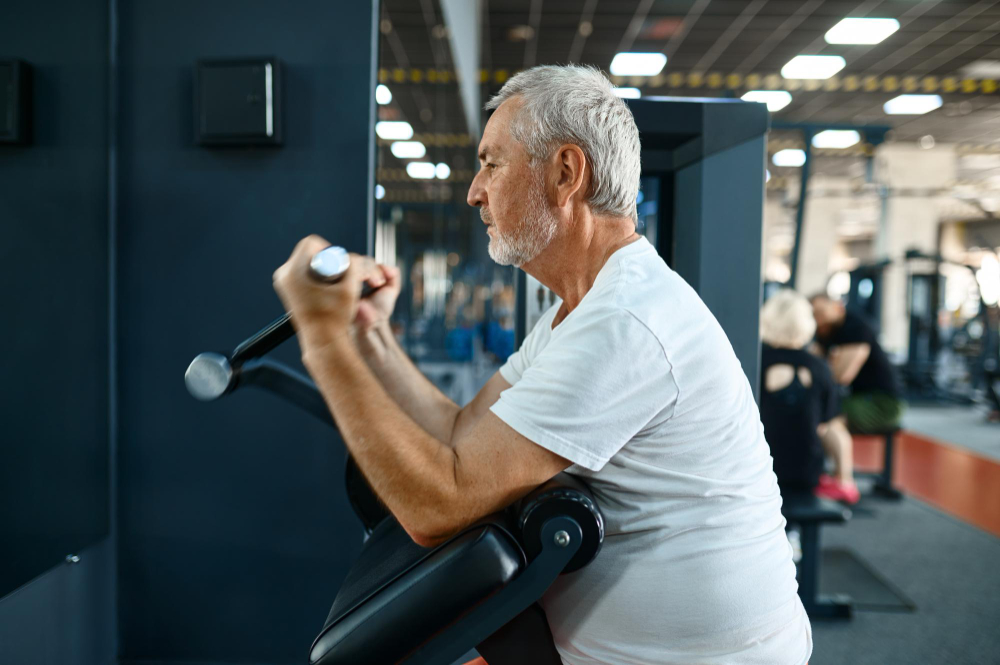
Keeping your all-important health indicators like your heart rate, blood pressure, muscle strength, and bone density is not possible by engaging in exercise once in a while. Age-specific gym training can enable people to reinforce their bodies and prevent age decay.
Whether it is about making a solid foundation during your 20s or sustaining your health and vitality in your 60s and beyond, each decade needs a different strategy. For example, practicing Muay Tai in Phangan or at other places can make a difference in fitness.
Training in Your 20s: Building Foundations
To focus: Endurance, strength, and habit creation.
At 20s, the body’s metabolism is at its highest & the recovery is faster. This is the stage for creating strength, cardiovascular endurance, and flexibility. The compound lifts of squats, deadlifts, and bench presses are good for overall bone density, muscle growth, and cardio sessions like HIIT and running boost lung capacity, heart health.
Getting consistence in this decade is the key to long-term maintenance.
Training in Your 30s: Balancing Strength and Stress
Directions: Metabolic and sustainable routines.
With metabolism starting to slow down at age 30s, keeping muscle mass is especially important to assist in calorie metabolism and essential homeostasis. Functional movement like kettlebell swings and planks should be incorporated around strength training to safeguard joint health and position.
Training in Your 40s: Protecting Joints and Hormonal Balance
Emphasis: metabolic treatment and joint-friendly training.
By the 40s, the bone density could decrease, and hormonal alterations could change the retention of the muscle. The gym sessions ought to progress to low-impact strength training using machines or resistance bands so as to avoid stress on joints.
Moderate stage circuit training that involves cardio workout sessions in between the weights used is beneficial in ensuring that blood sugar levels, blood pressure, and a healthy resting heart rate are maintained. The exercises performed on stretch and mobility decrease stiffness and increase circulation.
Training in Your 50s: Strengthening the Heart and Muscles
Concentration: Critical, healthy, and accident resistance.
In 50s, cardiovascular exercise was essential in maintaining good health of the heart. Running is a high-impact exercise; therefore, exercise in treadmills, rowing machines, or the elliptical machine is an alternative because brisk walking is safer.
Two to three times per week of resistance training maintains the lean muscle mass that is normally lost with age. Such activities as Pilates or Swiss ball exercises help to stabilize the core and lower the risk of injury. For recreation, one can join a Muay Thai gym in Koh Phangan or at other places, which will reduce the risk of injury.
Training in Your 60s and Beyond: Longevity and Mobility
Emphasis: Mobility and functional health, balance.
The aim after 60 is to remain independent. Light-weight strength training focuses preserves muscle, and fall prevention through balance-centric learning, such as tai chi or stability training on a ball, avoids falls.
Low-impact cardio activities like swimming or bicycling work the heart and do not put so much pressure on the joints. Mobility and circulation are helped by practicing flexibility, such as gentle yoga or regular stretching.
Pertinent vital signs, such as oxygen carrying capacity and resting heart rate, can be better sustained even within the short and milder regimes.
When you adopt the right attitude, your gym visit becomes a lifelong friend in maintaining health, strength, and vitality.